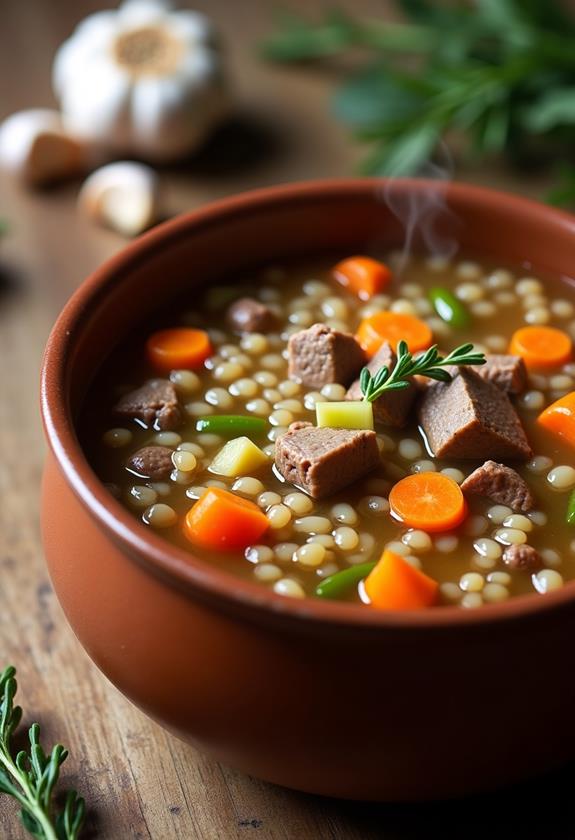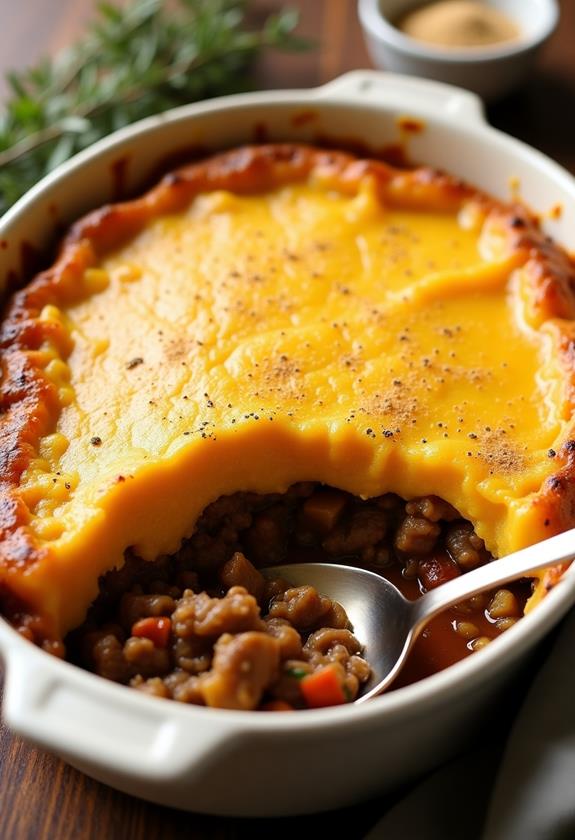Lasagna Casserole Recipe

When tackling the art of a lasagna casserole, you might wonder how to perfectly balance the flavors and textures in each layer. You start by browning ground beef, ensuring it's thoroughly cooked before it simmers with rich marinara sauce. As the noodles reach that ideal al dente texture, the anticipation builds. Mixing ricotta with the right seasoning is essential, yet you might be curious—what secret ingredient elevates this dish to a new level? There's more to ponder before it graces your table, and the next steps will reveal just how to master this comforting classic.
Recipe
Lasagna casserole is a delicious and versatile dish that brings all the comforting flavors of traditional lasagna into a simplified, one-dish meal. It's perfect for family dinners, potlucks, or meal planning, as it can easily be customized to suit different tastes and dietary preferences.
With layers of pasta, rich meat sauce, creamy ricotta, and gooey cheese, this casserole is a crowd-pleaser that's both easy to prepare and satisfying to eat.
The casserole's layered structure allows for endless customization, making it a great option for those who want to experiment with different ingredients. You can keep the classic flavors or switch things up with vegetarian alternatives like mushrooms or spinach.
The best part is that you can prepare it in advance, making it a convenient choice for busy weeknights or special occasions. Here is the list of ingredients you'll need:
- 1 pound ground beef
- 1 jar (24 ounces) marinara sauce
- 9 lasagna noodles
- 2 cups ricotta cheese
- 3 cups shredded mozzarella cheese
- 1/2 cup grated Parmesan cheese
- 1 egg
- 1 teaspoon Italian seasoning
- Salt and pepper to taste
To make the lasagna casserole, start by preheating your oven to 375°F (190°C). In a large skillet, cook the ground beef over medium heat until browned, then drain excess fat. Stir in the marinara sauce and let it simmer for a few minutes.
Meanwhile, cook the lasagna noodles according to the package instructions and set aside. In a bowl, mix the ricotta cheese, egg, Italian seasoning, salt, and pepper.
In a 9×13-inch baking dish, layer the meat sauce, noodles, and ricotta mixture, repeating the layers until all ingredients are used. Finish with a generous layer of mozzarella and Parmesan cheese on top. Cover with foil and bake for 25 minutes, then remove the foil and bake for another 10 minutes, or until the cheese is bubbly and golden.
For the best results, let the lasagna casserole rest for about 10-15 minutes before serving to allow the layers to set, making it easier to cut and serve.
If you prefer a vegetarian version, simply substitute the ground beef with sautéed mushrooms or spinach. You can prepare the casserole a day in advance, refrigerate it, and bake it just before serving. It also freezes well, so consider making a double batch to enjoy later.
Cooking Steps
Let's get cooking, shall we? Start by cranking up your oven to a toasty 375°F—it's the perfect temperature to get things bubbling.
While it's warming up, brown that ground beef thoroughly, and let it simmer with marinara sauce, filling your kitchen with that irresistible aroma.
Step 1. Preheat Oven to 375°F
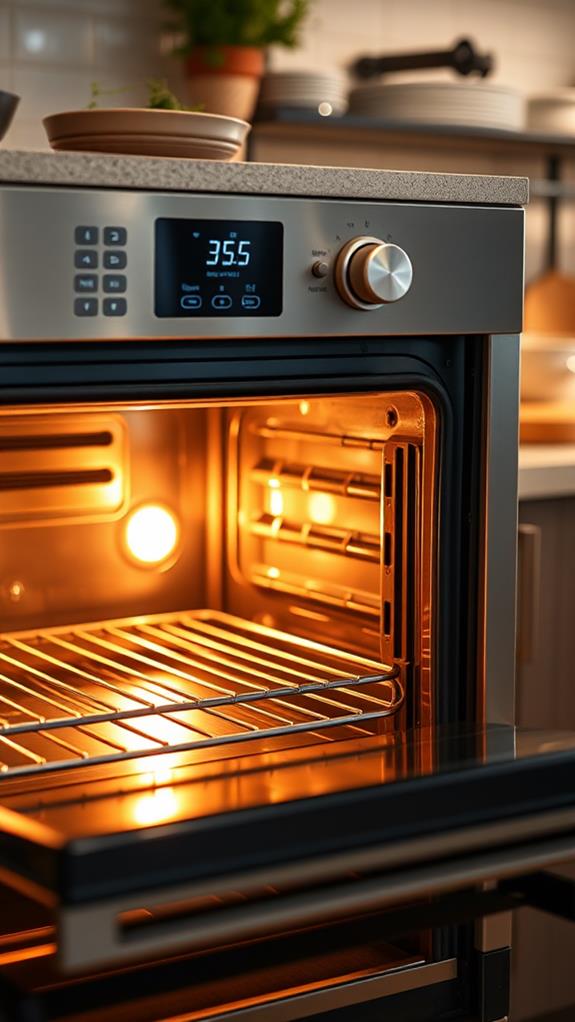
A essential step in preparing your lasagna casserole is preheating the oven to 375°F (190°C).
Don't underestimate this important move—it's like giving your casserole a warm hug, making sure the cheese melts perfectly and the layers cook evenly.
You'll want to do this before assembling your ingredients, so the oven's ready to go when you are. It's a good time to double-check you've got all your ingredients lined up, too.
Pro tip: Use this moment to dance a little kitchen jig—it's scientifically proven to make food taste better. Just kidding, but it can't hurt, right?
Step 2. Brown Ground Beef Thoroughly
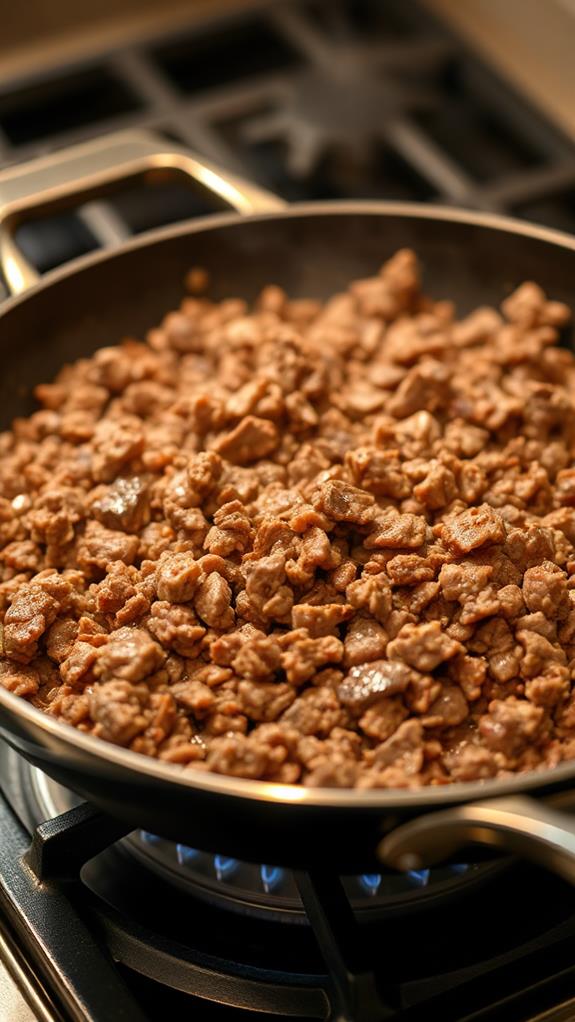
Start by heating a large skillet over medium heat and adding the ground beef. As it begins to sizzle, grab a spatula and break it into smaller pieces.
You'll want to stir occasionally, ensuring all those little bits get browned evenly. Don't rush this step! A thoroughly browned beef adds depth and richness to your lasagna casserole, making each bite deliciously savory.
As the beef cooks, you might notice some fat pooling in the skillet. Just drain the excess so your casserole doesn't become greasy.
Keep an eye out for any stubborn pink spots, and make sure they're gone before moving on. It's the little details that elevate your dish from good to great! Happy browning!
Step 3. Simmer Beef With Marinara Sauce
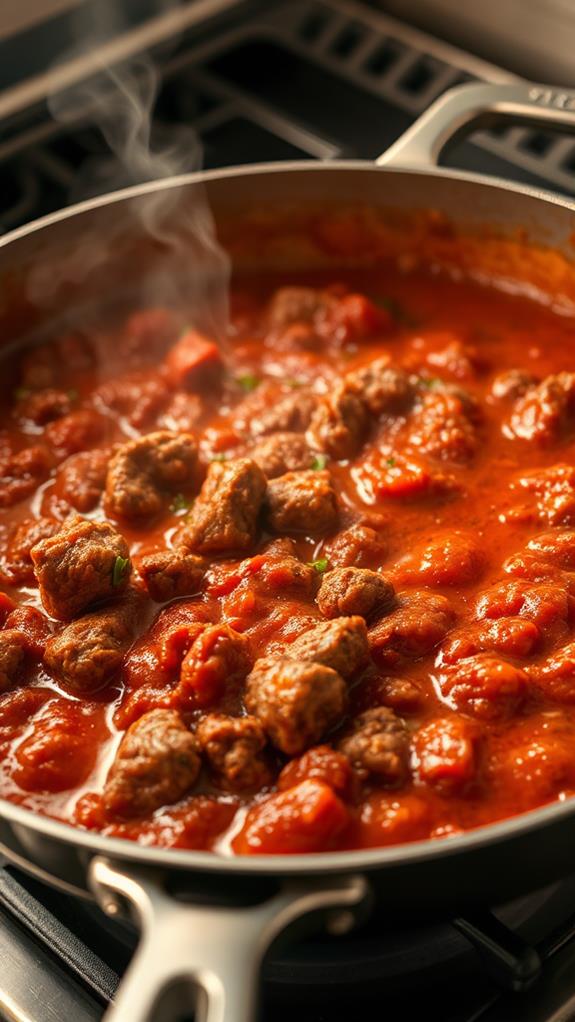
Infuse your lasagna casserole with robust flavor by simmering the browned beef in marinara sauce.
Once your beef is perfectly browned, it's time to give it a saucy upgrade. Pour in the marinara sauce, making sure every bit of beef is happily swimming in it.
Stir it gently, as if you're coaxing out all those rich flavors. Let it simmer over medium heat for about 10 minutes, stirring occasionally.
This allows the beef to soak up the tangy, herby goodness of the sauce, infusing every bite with deliciousness. Don't rush; this is where the magic happens!
Avoid any sauce eruptions by keeping the heat steady. You'll love how this simple step elevates your casserole from good to "can-I-have-seconds" amazing!
Step 4. Cook Noodles Until Al Dente
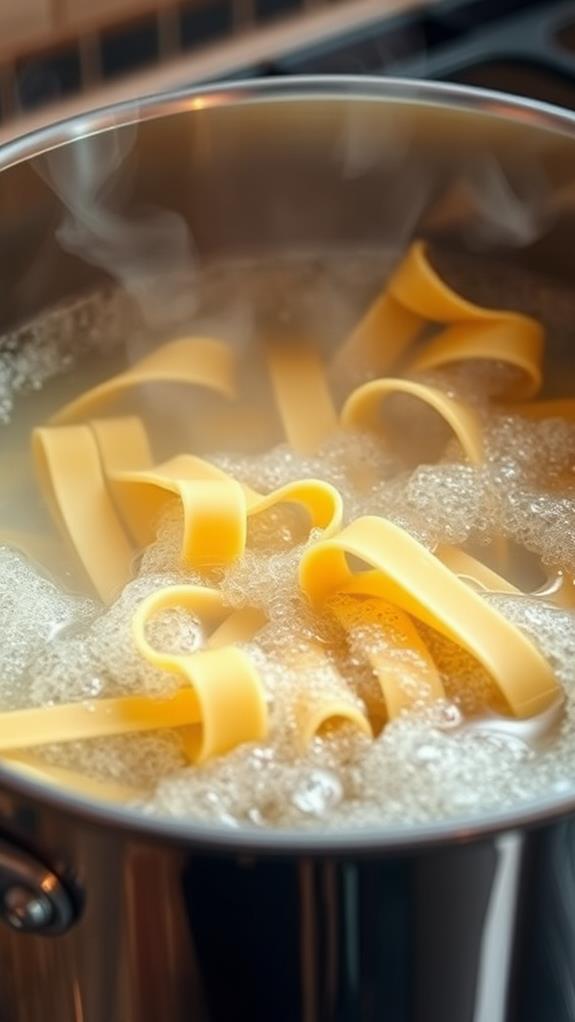
With your beef and marinara sauce simmering to perfection, it's time to focus on the pasta.
Grab your lasagna noodles and a large pot. Fill the pot with water, add a pinch of salt for flavor, and bring it to a boil.
Once you've got a rolling boil, gently slide the noodles in, giving them a friendly stir to prevent sticking. Cooking noodles until al dente means they should be firm to the bite—think of it like the pasta equivalent of a firm handshake.
Check a noodle after about eight minutes. If it says "hello" with a little resistance, it's ready!
Drain them well, but be careful not to let them cool into a tangled mess. Now, you're all set for layering!
Step 5. Mix Ricotta With Seasoning
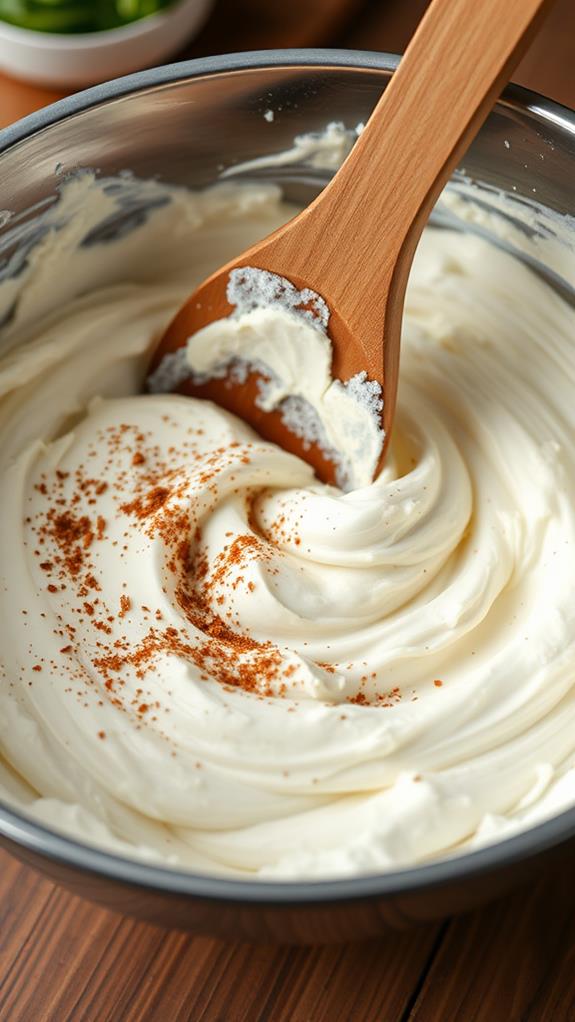
As you prepare to layer the lasagna casserole, gather your ricotta cheese and seasonings for a flavorful blend.
Start by scooping the ricotta into a mixing bowl, but make sure it doesn't escape! Add one egg, which will help bind everything together. Sprinkle in a teaspoon of Italian seasoning for that classic, herbaceous aroma.
Don't forget a pinch of salt and a dash of pepper to enhance the flavors. Stir vigorously until the mixture is smooth and well combined, like you're conducting a tiny symphony of cheese and spices.
This creamy concoction will be your secret weapon, adding richness to each bite of lasagna. Remember, the key is in the mix—so don't skimp on the seasoning!
Final Thoughts
Savor the simplicity and flavor of lasagna casserole as you bring this comforting dish to your table.
There's something magical about a meal that combines ease and taste, don't you think? Whether you're a seasoned chef or a kitchen newbie, this recipe is a culinary hug, perfect for any occasion.
You'll love how the layers of pasta, cheese, and sauce create a symphony of flavors that's hard to resist.
Remember, the beauty of this dish lies in its versatility. Feel free to tweak it—throw in some veggies or switch up the cheeses.
And hey, don't stress about the leftovers; they're just as delicious the next day.
Frequently Asked Questions
Can I Use Gluten-Free Lasagna Noodles for This Casserole?
Absolutely, you can use gluten-free lasagna noodles. Just guarantee they're cooked according to package instructions. This substitution keeps the dish gluten-free without compromising taste or texture, making it perfect for those with dietary restrictions. Enjoy your meal!
What Is the Recommended Substitute for Ricotta Cheese in This Recipe?
You can substitute ricotta cheese with cottage cheese or cream cheese for a similar texture. Blend cottage cheese for a smoother consistency or mix cream cheese with a little milk to achieve the desired creamy effect.
How Can I Prevent My Lasagna Noodles From Sticking Together?
To prevent lasagna noodles from sticking, add a splash of oil to the boiling water and stir occasionally. Once cooked, rinse them under cold water and lay them flat on a baking sheet.
What Is the Best Way to Reheat Leftover Lasagna Casserole?
To reheat leftover lasagna casserole, preheat your oven to 350°F. Cover it with foil to retain moisture, and bake for about 25 minutes. Alternatively, use the microwave, covering it to prevent drying out. Enjoy!
Can I Add Vegetables to This Lasagna Casserole, and if So, Which Ones?
You can definitely add vegetables to your lasagna casserole. Try incorporating spinach, zucchini, bell peppers, or mushrooms. Sauté them before layering to enhance their flavor and guarantee they cook thoroughly. Customize to suit your taste preferences!
Conclusion
And there you have it, your very own lasagna casserole masterpiece! By now, your kitchen smells amazing, and you're just a few bites away from enjoying all those delicious layers. Remember, you can tweak this recipe to fit your taste, like swapping beef for veggies or using gluten-free noodles. Don't forget to let it cool a bit before digging in—burnt tongues aren't fun! Enjoy your creation, and here's to perfectly cheesy leftovers tomorrow.

